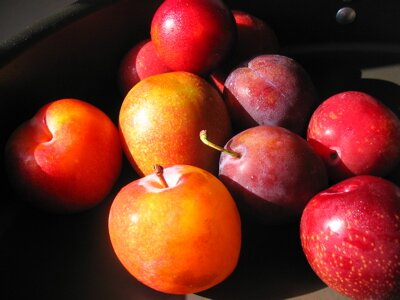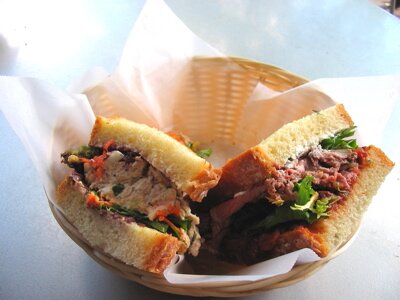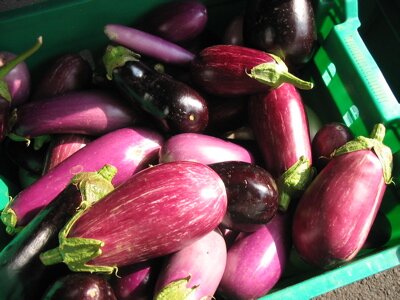Plummery
I learned at Williamstown that nasty, underripe plums from Stop&Shop make decent tomatoes. I’d quarter and sauté them with a pinch of salt and pepper, and then add them to pasta or whatever (you might want to try this, by the way – an interesting experiment in taste), because the actual tomatoes I could get were filthy waxy things that I wouldn’t throw at Dubya if they put him in the stocks.
Actually, I’ll have to think that one over a little.
I was introduced to plums by a tiny Japanese woman in a hole in the wall on 2nd and 10th, directly across from the 2nd Avenue Deli. The woman’s name is Chika Tilman, and the hole in the wall is called Chika-licious. Chika-licious is a dessert restaurant, and probably unique in my dining experience, and for fear that I’ll spend this entire entry raving about it, that’s all I’m going to say for now.
Diana likes plums (I thought they were the things you passed by on your way to the peaches at the market), and at the time, Mrs. Tilman had a bruleed plum on her menu. This plum was literally the second best piece of fruit I’ve ever tasted – crisp as a cucumber, and yet so overwhelmingly, perfectly ripe you could have worn its smell as perfume. We didn’t so much eat it as sink into its flavour, so deep and joyously floral we felt positively unworthy. It took us a while to catch our breath. Mrs. Tilman, during a lull in service, nibbled on the other half of the plum she served us, holding it to her mouth with both hands, like a bowl of tea. Gingerly, not daring to believe she would divulge her source, I asked where I might find these objects of wonder.
“I ship them from a farm in California,” she said, and took another bite of the plum. That was the last time a woman broke my heart.
Every plum I’ve had since then has been bought in a forlorn hope of matching that perfect, perfect half-plum that we had, but most have, in themselves, been lovely eating. When Diana came down for the first time this year, we went and bought a handful of every sort of plum we saw in Union Square. Neither of us had ever really thought there was so much variety to be had – in the photo, you see Victoria plums and Ozark plums, and Japanese and Castletons and Elephant Hearts. Friars and Simcas and little Greengages, found the next day, didn’t make it into the picture (the Greengages, sadly, were in poor shape, but this variety is supposedly the best eating plum around).
Our favourite, by far, were the Elephant Hearts, slightly mottled, very much heart shaped, with brilliant crimson flesh. You get a floral explosion when you bite into them, honey and a touch of cherry and exquisite grape, with sleek, mild tannins in the skin. The good ones get pleasantly tart in the middle, poorer ones just kind of peter out. Friar plums are miniature versions of the black plums you see all over the place, and correspondingly more intense – their black skin has a powerful tannic kick. The plums referred to in plum pudding, incidentally, aren’t necessarily plums at all, but any sort of dried fruit - the word was used in medieval times as a generic term. A similar confusion from the opposite side of the planet results in umeboshi, known to us as Japanese pickled plums, actually being a sort of apricot. Prunes (a prune is a plum, in French) are made from varieties with a high sugar content, close relatives of the Victoria or Italian plums - California prunes are apparently made with a variety known as prune d’Agens, which the French thought particularly estimable.
We ate all the Elephant Hearts, juice running down our chins and hands, and turned most of the rest into plum tarts – based on fouace instead of tart crust. Fouace is an enriched bread, much like brioche, but sweeter, eggier and heavier, almost to the point of cakiness (oddly, it’s less buttery). It worked well, we thought – but it’s honestly almost too much trouble to go to, not because the fouace is at all hard to make, but because at this time of year, the plums are so good you should just eat them as you walk down the street, smiling as you go.



